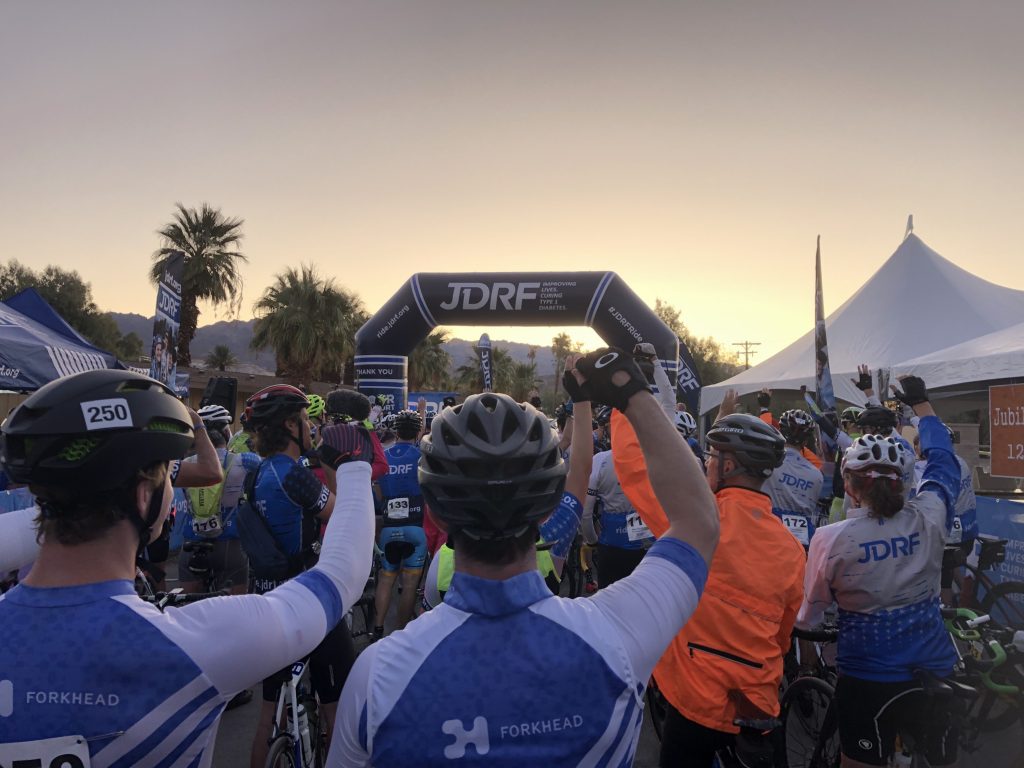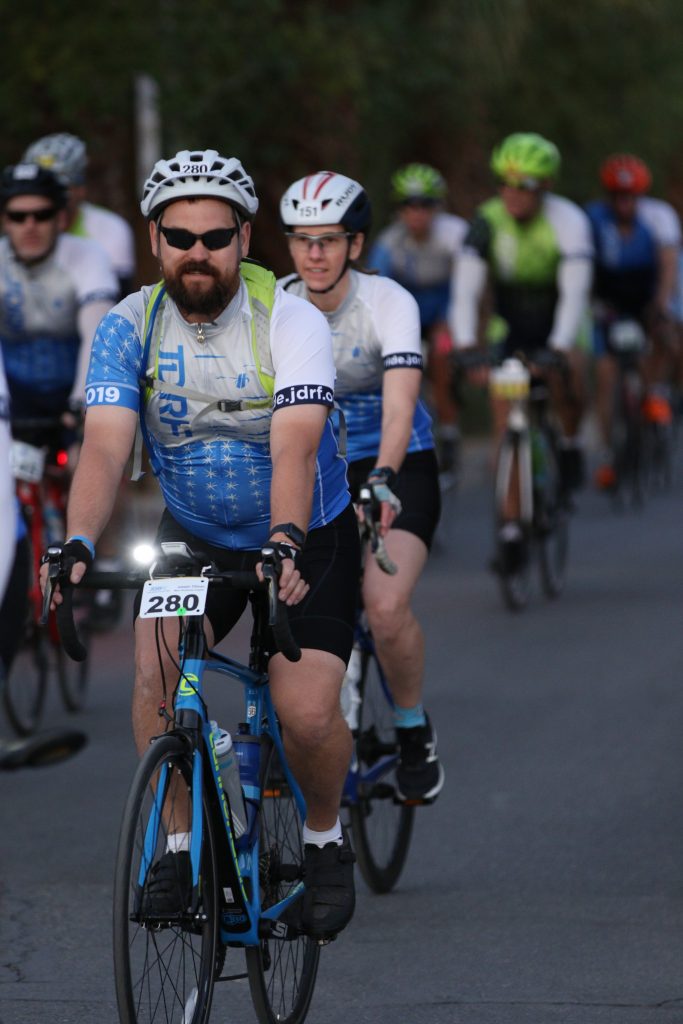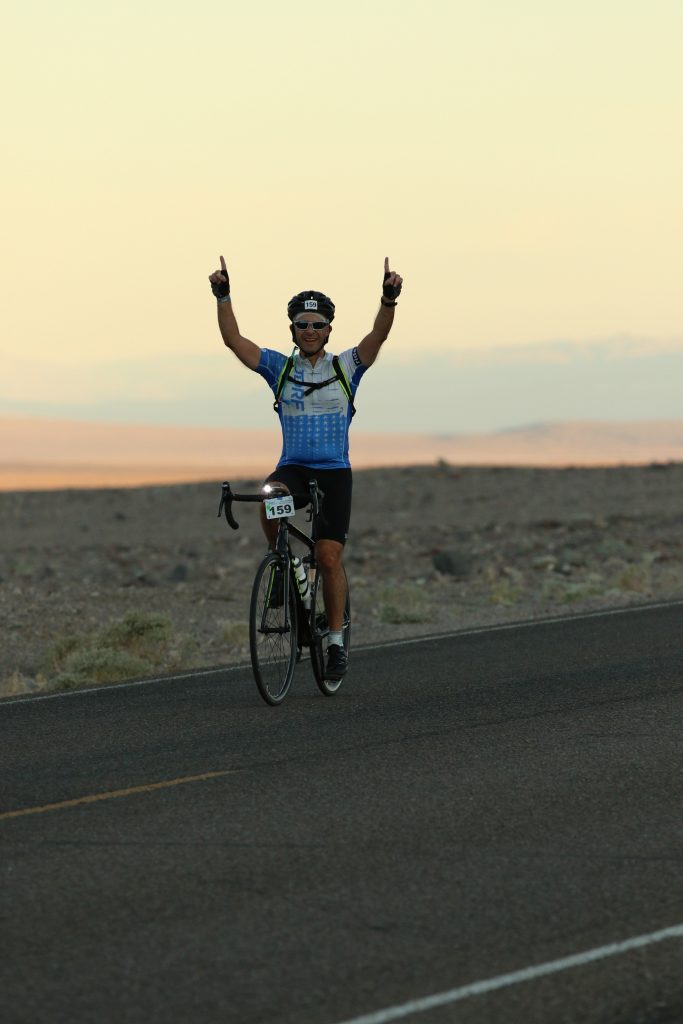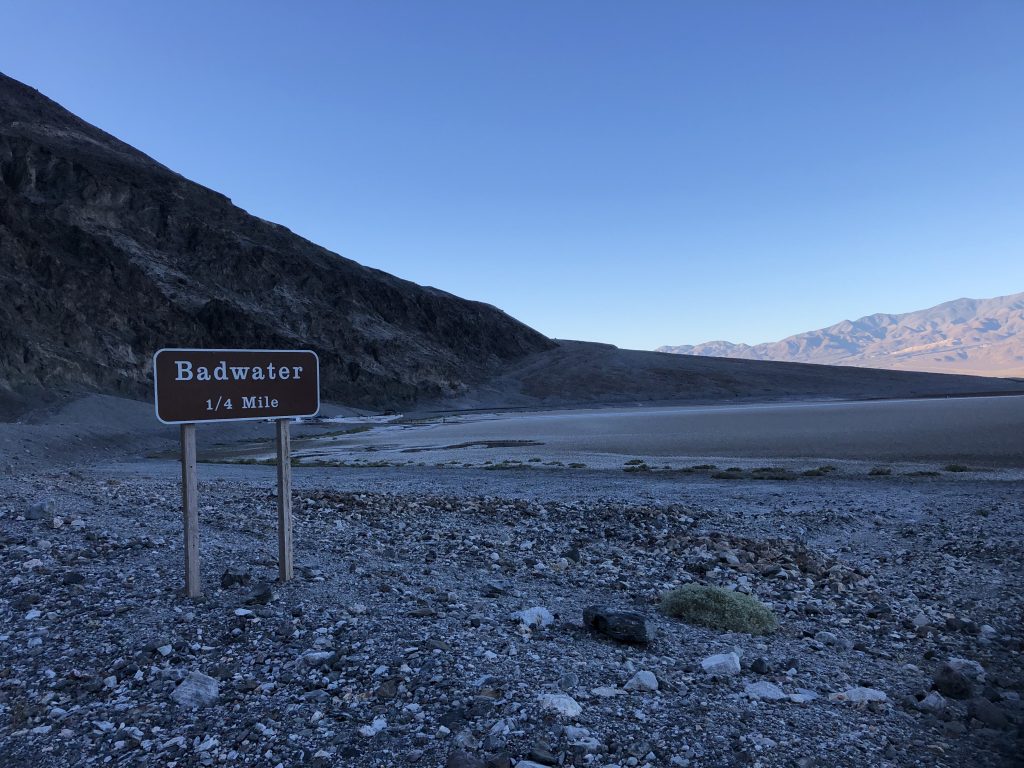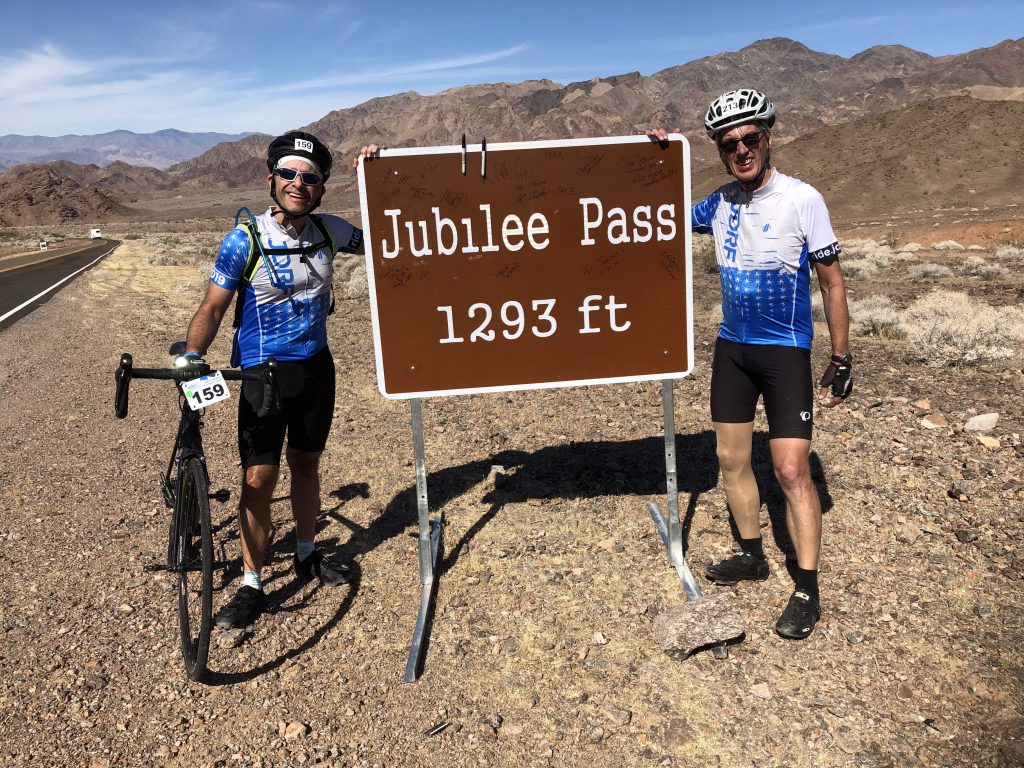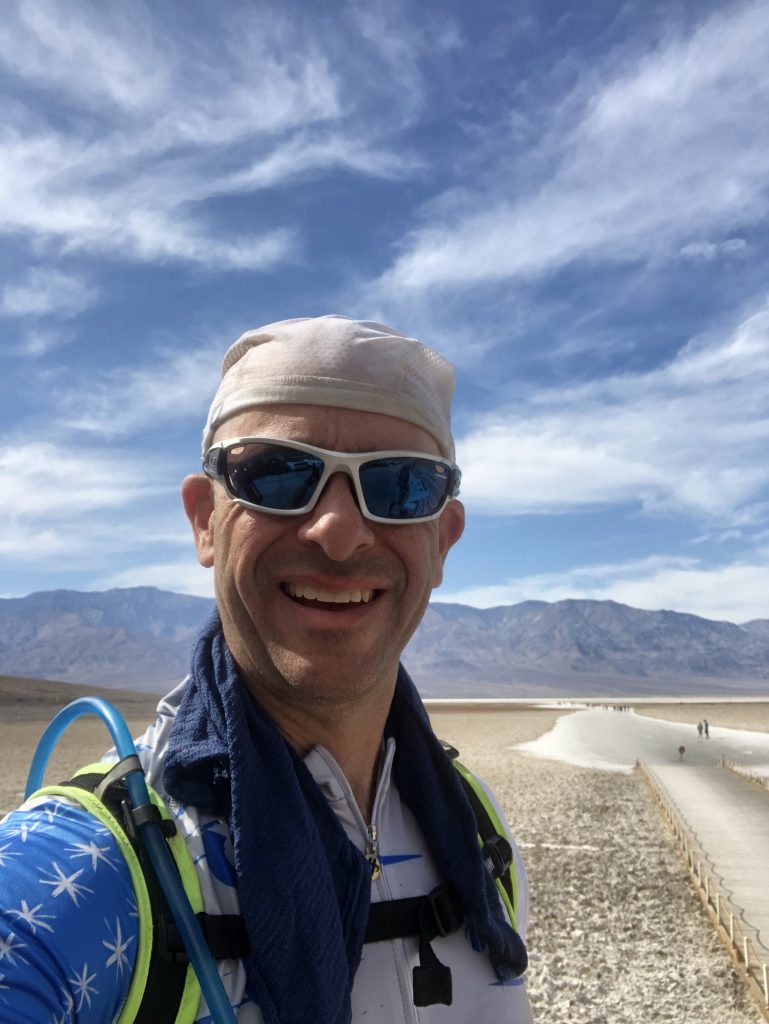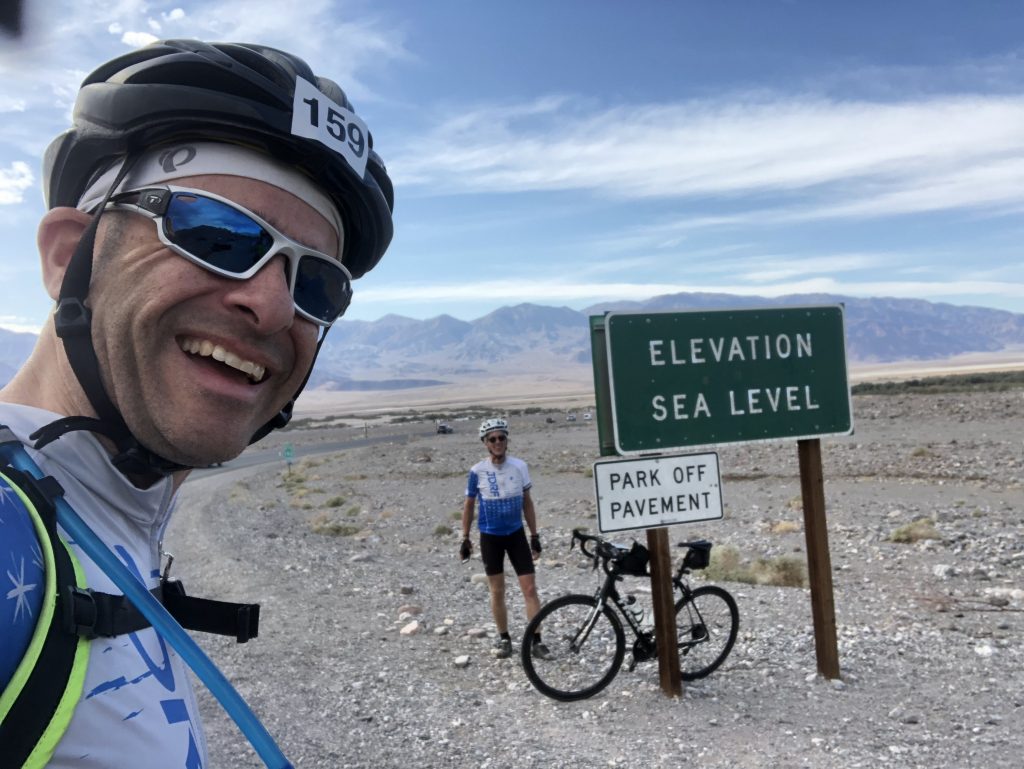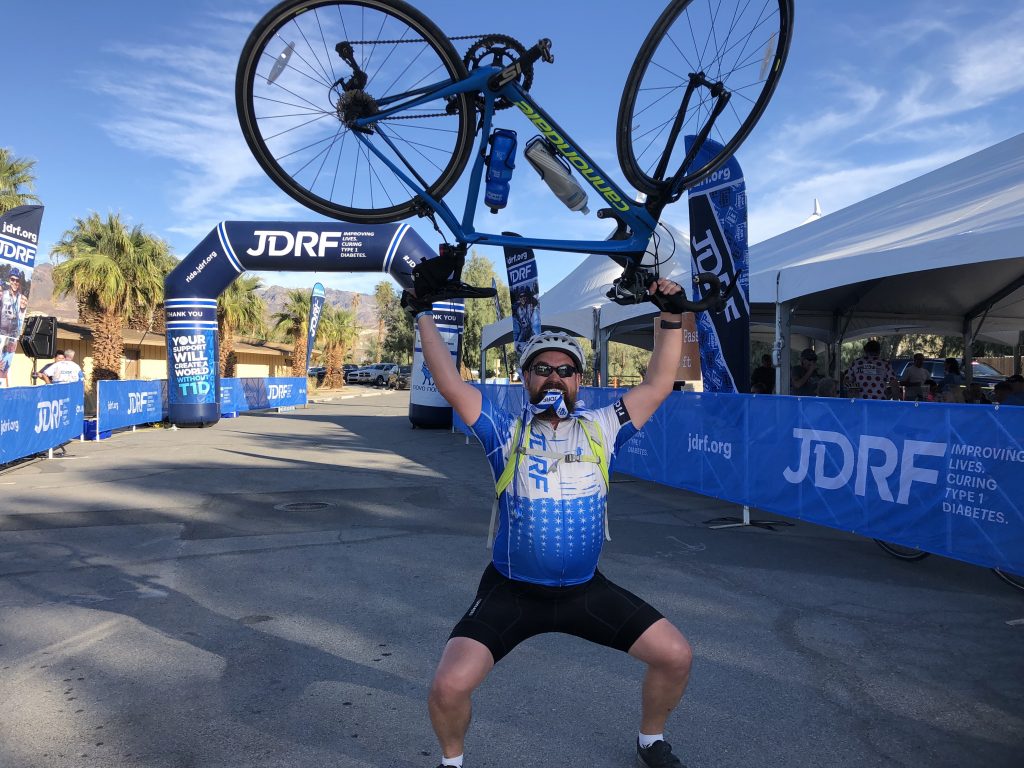As expected, Death Valley was hot and windy last Saturday. My Logistics Leaders for T1D Cure teammates and I set off on our bikes as the sun was rising, and when we crossed the finish line hours later, we did so with smiles on our faces. I’ll let these photos from the 102.7 mile ride speak for themselves:
I want to thank all of our LL4T1DCure team members (including those who rode in Sonoma, CA and Saratoga Springs, NY earlier this year) once again for their time and commitment to train and fundraise over the past few months. Our team raised $75,414 this year for JDRF, a new record for us! We came in second place as a team in terms of fundraising for the Death Valley Ride and in third place for the Saratoga Springs ride! The teams ahead of us were all large corporations, which makes our accomplishments even sweeter.
I also want to thank our sponsors and supporters for their generous donations, including BluJay Solutions, C.H. Robinson, Descartes Systems Group, and enVista. Simply put, without your support, this audacious dream I had four years ago to form a logistics cycling team to support JDRF wouldn’t have come true.
Interested in riding with us or sponsoring the team next year? Please contact me. Every mile we cycle, every dollar we raise will help us get closer to creating a world without type 1 diabetes (T1D)!
Moving on, here’s the supply chain and logistics news that caught my attention this week:
- Amazon Sells Clothes From Factories Other Retailers Blacklist (WSJ – sub. req’d)
- Amazon’s faster shipping dents profits, more pain to come (Reuters)
- Best Buy joins growing free next-day delivery crowd (StarTribune)
- UPS partners with CVS to develop drone delivery service for prescription drugs (CNBC)
- History made: Walgreens takes off with first drone delivery (Chain Store Age)
- Amazon expands its in-store pickup service, Counter, to thousands more stores (TechCrunch)
- LLamasoft Acquires Opex Analytics
- Fabric raises $110 million Series B to expand its network of automated fulfillment centers in the US (TechCrunch)
- Manhattan Associates Reports Record Third Quarter 2019 Revenue
- UPS Releases 3Q 2019 Earnings
- ATA Truck Tonnage Index Rose 0.2% in September
- U.S. trade envoy meets lawmakers on U.S.-Mexico-Canada deal as time runs short (Reuters)
The Buck Stops with Amazon
How many slaves are in your supply chain?
That was the title of a post I wrote back in May 2013 in the aftermath of a garment factory that collapsed in Bangladesh, which killed more than 1,100 workers and injured thousands of others.
As a result of that tragedy, many of the largest U.S. apparel retailers joined safety-monitoring groups — such as Amsterdam-based Accord on Fire and Building Safety in Bangladesh and Dhaka-based Alliance for Bangladesh Worker Safety — that required them to stop selling clothing made in factories that violated certain safety standards.
Amazon (along with T.J. Maxx and Ross) did not sign up.
An investigative report by Justin Scheck, Jon Emont and Alexandra Berzon from the Wall Street Journal found that Amazon today “offers a steady stream of clothing from dozens of Bangladeshi factories that most leading retailers have said are too dangerous to allow into their supply chains.” Here are some additional details from the article:
A spokesman said Amazon inspects factories that supply its own brands to ensure they are in line with international safety standards similar to those of the safety-monitoring groups. The Journal didn’t find Amazon-owned brands made in banned factories.
Of the banned factories the Journal found with apparel on Amazon, some of the clothing items they produced were for sale by Amazon directly. Most—more than two-thirds—were being sold by third-party sellers using Amazon’s marketplace platform.
The spokesman said Amazon doesn’t inspect factories making clothing that it buys from wholesalers or that comes from third-party sellers. Instead, it expects those wholesalers and sellers to adhere to the same safety standards [emphasis mine].
Amazon’s response is similar to the one General Motors provided in 2014 in the aftermath of an explosion at the Kunshan Zhongrong Metal Products factory in China that killed 75 workers and injured almost 200 others. Zhongron supplied aluminum alloy wheel hubs to another company, Citic Dicastal Wheel Manufacturing Co. which was a supplier to General Motors.
In a statement at the time, GM was quick to note that it did not have a direct relationship with Zhongrong, which it described as a Tier 2 supplier, and added that Tier-1 suppliers such as Dicastal are “required to source from Tier-2 suppliers who must meet both in-country environment and safety standards as well as quality standards.”
As I wrote at the time in “GM Supplier Factory Explosion: Thoughts On Supply Chain Visibility And Responsibility,” the scope of end-to-end supply chain visibility must go beyond the status of orders, shipments, and inventory — it must also include having timely, accurate, and complete visibility to labor, safety, environmental, and legal practices across the entire supply chain. You can’t outsource the responsibility; the buck ultimately stops with you, the brand owner. You have to see and walk your supply chain, from start to finish, with your own eyes and feet.
Amazon, it’s your brand getting tarnished in the headlines of the Wall Street Journal, not those of your third-party sellers.
For related commentary, see Still Don’t Know How Many Slaves Are In Your Supply Chain? and Why Supply Chain Mapping Matters.
The High Cost of Free One-Day Shipping
Free shipping ain’t cheap.
As reported by Reuters, “Amazon’s chief financial officer [Brian Olsavsky] said costs for its one-day shipping program will spike to around $1.5 billion during the holiday season as the online retailer speeds up free delivery to woo shoppers and fend off rivals like Walmart Inc and Target Corp.”
This is on top of the $800 million Amazon spent this past quarter on expanding its one-day shipping capabilities.
As quoted in a WSJ article, Mr. Olsavsky said that speedier shipping is causing Prime members to shop more. “They are buying more often and they are buying more products,” he said. According to the article:
Amazon’s world-wide shipping costs jumped 46% to $9.6 billion from the previous year as the company processes higher expenditures related to its one-day shipping program for Prime subscribers. Online sales growth has accelerated as Amazon has invested more into one-day shipping. Sales in online stores rose 22% in the third quarter, double the growth rate a year earlier [emphasis mine].
Simply put, delivery is the new moment of truth, a competitive weapon to drive sales and provide an enhanced customer experience.
It’s the reason why Best Buy is trying to keep pace with Amazon with free one-day delivery. The retailer announced this week that “about 99 percent of Best Buy customers (so, almost everyone) now get Free Next-Day Delivery on thousands of items. From tablets to headphones to espresso machines, tons of the most popular holiday items are included. But, it excludes some bigger and heavier things like big-screen TVs and refrigerators (basically if it’s too big to fit down the chimney).”
Will this free lunch come to an end someday? Somebody always has to pay the bill.
For related commentary, see Free Shipping Is Costing More (As Small Packages Flood Delivery Networks).
And with that, have a happy weekend!
Song of the Week: “Chinese New Year” by SALES

